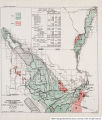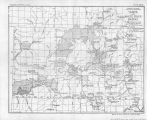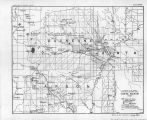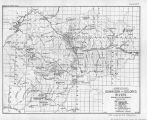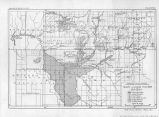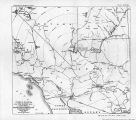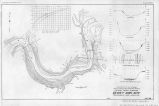| OCR Text |
Show 18 PROBLEMS OF IMPERIAL VALLEY AND VICINITY. be quickly pumped out when the flood had passed and the excavation of the additional foundation and placing of foundation concrete could proceed at all times when the river flow is below the capacity of the tunnels; and this would mean without serious or expensive interruptions except during the brief season of high water in May and June. The method just described for meeting foundation conditions in Boulder Canvon has been successfully carried out in placing the foundations for the Shoshone and the Arrowrock dams, the highest yet built by the Reclamation Service. The depth to foundation at Arrowrock was about 100 feet, and on the Shoshone about 90 feet. At Boulder Canyon the depth is greater and the quantities are larger, but it is practicable to assemble a much larger construction outfit and to make more strenuous speed than was found necessary at either of the two locations mentioned. These experiences have led those familiar with them to conclude that the placing of the foundation in Boulder Canyon for a concrete dam by the above method is entirely feasible and not unduly expensive. If this is true, the plan of blowing the cliffs into" place for a rock-fill dam is not necessary to solve the problem. It might, however, have advantages of economy, but this is difficult to predict on account of the unprecedented character of the operations. A structure necessary to solve the problem of the Colorado Rivei by a dam in Boulder Canyon is so high and so far beyond the precedents that it seems advisable, with due care for engineering safety and economy, to avoid going outside of such precedents so far as possible. For this reason it seems to be desirable to build the structure of concrete in accordance with well-established theory confirmed by numerous and varied precedents. A rock-fill structure might be cheaper, but our experience is so limited that we can not be sure that this will be the case, and if some unforeseen difficulties, such as blow-outs under the rock fill, should be encountered, its expense might even be greater than that of a concrete structure, and we can not be sure that it would be entirely safe. COMPARISON OF BOULDER CANYON RESERVOIR WITH OTHER POSSIBLE SITES. The demand for a large regulating reservoir on the Lower Colorado is urgent and imperative-first, for regulating floods; second, for providing storage water for irrigation; and third, for power. Without the power the reservoir is not feasible at all, as the expense would be too great to be borne by the other interests alone. The reservoir site provided by a dam in Boulder Canyon, or its continuation, Black Canyon, is the lowest point on the Colorado River where a site of sufficient capacity can be found. Above this site the Grand Canyon occurs, and no reservoir of capacity sufficient to control the entire flow of the river occurs until we reach a point above the Grand Canyon National Park. A site has been proposed above the mouth of the Paria River in Glen Canyon, and it has been urged that a reservoir formed here would, for a given height of dam, provide greater storage capacity and would so regulate the floods as to facilitate the construction of other dams farther down. These |
| Source |
Original book: [State of Arizona, complainant v. State of California, Palo Verde Irrigation District, Coachella Valley County Water District, Metropolitan Water District of Southern California, City of Los Angeles, California, City of San Diego, California, and County of San Diego, California, defendants, United States of America, State of Nevada, State of New Mexico, State of Utah, interveners] : |





































